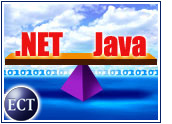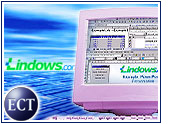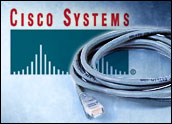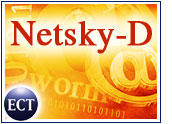
Macromedia Flash technology garnered a somewhat shaky reputation at the height of dot-com mania in the 1990s, when it was often associated with Web site splash pages that effectively served as brick walls barring users from accessing a site’s useful content.
But Flash has grown up — or, more precisely, those who use this now-ubiquitous technology have done so. Available on 98 percent of all Internet-connected computers, Flash is now an important, easy-to-use environment for creating interactive Web advertisements, educational CD-ROMs, Sony PlayStation games and software demonstrations.
How did Flash transcend its less-than-auspicious beginnings to become such an appealing and useful technology?
Flash’s Ubiquity
Forest Key, senior product manager at Macromedia, told the E-Commerce Times that early versions of Netscape and Internet Explorer came bundled with Flash. This aggressive distribution contributed to the technology’s popularity.
In addition, Yankee Group senior analyst Dana Gardner said, Macromedia has made Flash the de facto standard development environment for adding rich media and animated media presentations to Web sites.
“It’s nearly ubiquitous on the client end, and its rich interaction is appealing to developers,” Gardner told the E-Commerce Times. “When browsers took over, one of the drawbacks was that they were very two-dimensional. They were missing things like sound, graphics, animation. Flash fixes these sterile environments.”
Flash Works
For his part, Jay Gulick, marketing vice president at Web and software demonstration developer AutoDemo, said users have accepted Flash readily because it consumes very little bandwidth. With most home users still accessing the Internet via a dial-up connection, low overhead is a huge benefit.
Flash’s reliability is another factor in its widespread adoption. According to Macromedia’s Key, the technology appeals to developers because it plays back in a consistent manner, regardless of operating system, processor speed or device type. A Flash program will look and act the same on a user’s PC, mobile phone or PDA, for example.
Also, developers can customize Flash to work in a variety of different applications.
“It’s a great tool with very few limitations,” Gulick told The E-Commerce Times. “If you can conceive it, the smart people at Macromedia will develop ways to make it work.”
The Rich Media Experience
Flash’s reputation for providing a rich media experience has made it especially popular in the advertising community.
“Advertisers use Flash to grab the momentary attention of Web surfers,” Gardner said.
Recently, in fact, Macromedia and DoubleClick partnered to create the DART motif. According to Gardner, this end-to-end system streamlines delivery of Flash media advertisements by integrating the development, production and deployment stages into a packaged environment.
Scott Spencer, director of product management for publisher solutions at DoubleClick, told the E-Commerce Times that rich-media campaigns that once took two weeks to complete now take only two days.
According to Spencer, DART helps businesses achieve significant return on investment (ROI) because it reduces the cost of deployment.
Flash Forward
Flash has the potential to extend its reach far beyond its advertising, direct-marketing and education strongholds. In the future, Key said, Flash MX will help create what he called rich internet applications (RIAs). Unlike most present-day applications, users will be able to invoke RIAs dynamically in different environments over a network.
Even enterprise software could run as an RIA, Key noted. Already, he uses an expense report application, based on an Excel spreadsheet, that processes his data and then follows predefined rules to determine how much he can write off as a business expense. He can run this application on any device he chooses.
The future of Flash is coming. Is your business ready to take advantage of this technology?
















































Social Media
See all Social Media